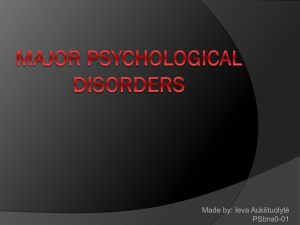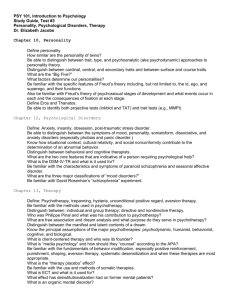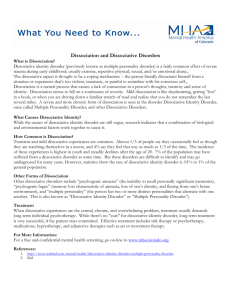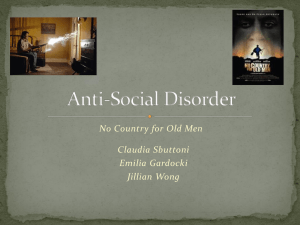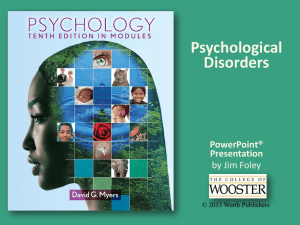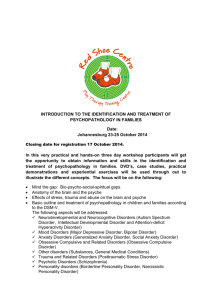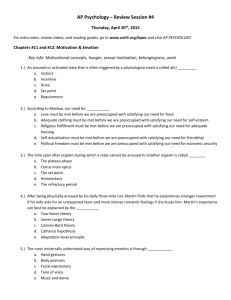Lesson 3: Dissociative and Personality Disorders
advertisement
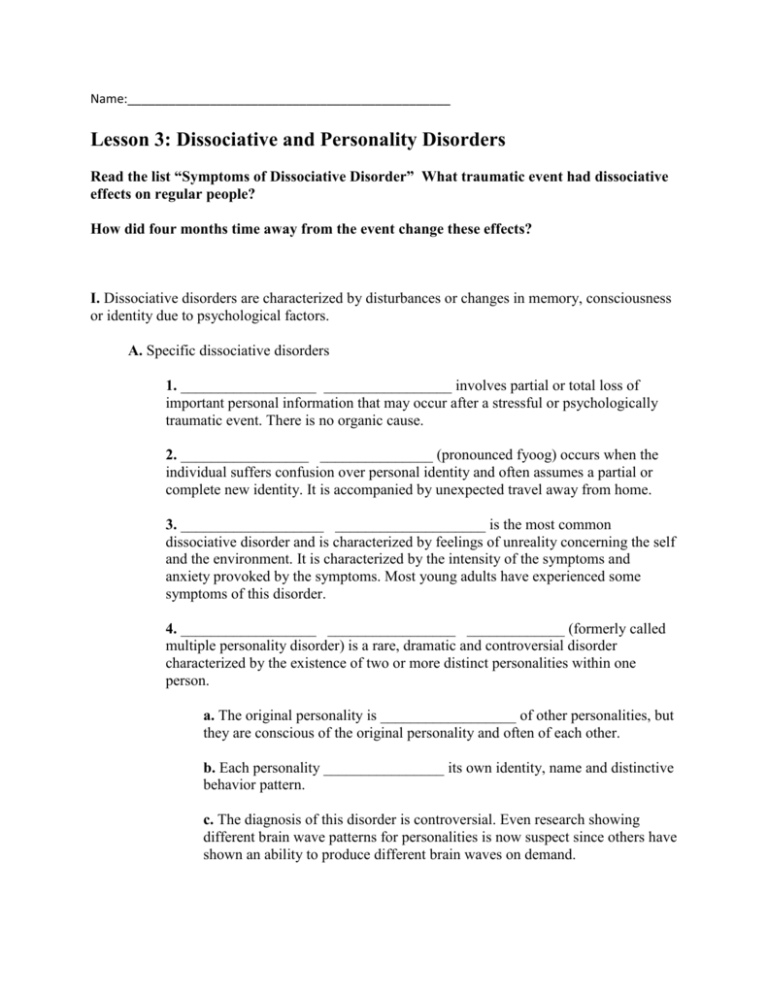
Name:_______________________________________________ Lesson 3: Dissociative and Personality Disorders Read the list “Symptoms of Dissociative Disorder” What traumatic event had dissociative effects on regular people? How did four months time away from the event change these effects? I. Dissociative disorders are characterized by disturbances or changes in memory, consciousness or identity due to psychological factors. A. Specific dissociative disorders 1. __________________ _________________ involves partial or total loss of important personal information that may occur after a stressful or psychologically traumatic event. There is no organic cause. 2. _________________ _______________ (pronounced fyoog) occurs when the individual suffers confusion over personal identity and often assumes a partial or complete new identity. It is accompanied by unexpected travel away from home. 3. ___________________ ____________________ is the most common dissociative disorder and is characterized by feelings of unreality concerning the self and the environment. It is characterized by the intensity of the symptoms and anxiety provoked by the symptoms. Most young adults have experienced some symptoms of this disorder. 4. __________________ _________________ _____________ (formerly called multiple personality disorder) is a rare, dramatic and controversial disorder characterized by the existence of two or more distinct personalities within one person. a. The original personality is __________________ of other personalities, but they are conscious of the original personality and often of each other. b. Each personality ________________ its own identity, name and distinctive behavior pattern. c. The diagnosis of this disorder is controversial. Even research showing different brain wave patterns for personalities is now suspect since others have shown an ability to produce different brain waves on demand. Watch “Dissociative Identity Disorder Documentary – The Extra Ordinary” 9:58 and make five observations: 12345- B. Explaining dissociative disorders 1. Dissociation is a relatively common response to traumatic experience. People report feeling _________________ from their surroundings and their own bodies. 2. In those persons with dissociative disorders the dissociative experiences are more extreme and frequent, and the symptoms severely disrupt everyday functioning. 3. The learning perspective views dissociation as rewarding and thus highly reinforcing. 4. Some psychologists suggest that dissociative identity disorder is a ________________ ___________. II. Personality disorders A. In general, personality disorders are 1. Characterized by long-standing chronic, inflexible, maladaptive patterns of perception, thought and behavior that seriously impair an individual's ability to _________________ personally or socially. 2. Usually recognizable by the time the person reaches ___________________. 3. As a group, among the least reliably judged and are questioned as to their existence independent of the social and cultural factors in which they develop. B. Examples of specific personality disorders 1. _____________________ personality disorder is marked by a grandiose sense of self-importance and is preoccupied with fantasies of success or power. Additionally, the individual feels a need for constant attention or admiration, has inappropriate reactions to criticism, may be indifferent or over-reacting, and feels entitled to favors without reciprocation. Watch “Narcissistic Personality Disorder” 8:07 and make five observations 12345Watch “How to Spot Narcissists on Facebook” 5:06 What are 5 things to look for? Read the article comparing Facebook to Twitter, which social media is considered more narcissistic and why? 123452. ___________________ __________________ disorder is marked by a longstanding pattern of irresponsible behavior that hurts others without causing feelings of guilt for oneself. The individual often does not experience shame or intense emotion of any kind. The violation of social norms begins early in life and may involve various criminal acts, often committed impulsively. C. Explaining antisocial personality disorders 1. The ______________________ perspective suggests that a genetic vulnerability (related to little or low level autonomic system arousal) may contribute to the antisocial personality disorder. This is correlated with a fearless approach to life. 2. The __________________________ perspective suggests that, in the case of antisocial personality disorder, if fearlessness is channeled in productive directions, heroism or adventurism may result. Lacking a sense of social responsibility, the same disposition produces, for example, a con artist or killer. 3. Some studies have detected early signs of antisocial behavior in children as young as 3 to 6 years old. Watch: “Antisocial-Personality-Disorder” 6:06 and make 5 observations. 12345Watch “Antisocial Personality Disorder – The Low-Level Psychopath” 7:23 and make 3 observations. 123- Who do you know of, perhaps a celebrity or someone reported in the news , do you think has one of the disorders learned about? Which disorder?



